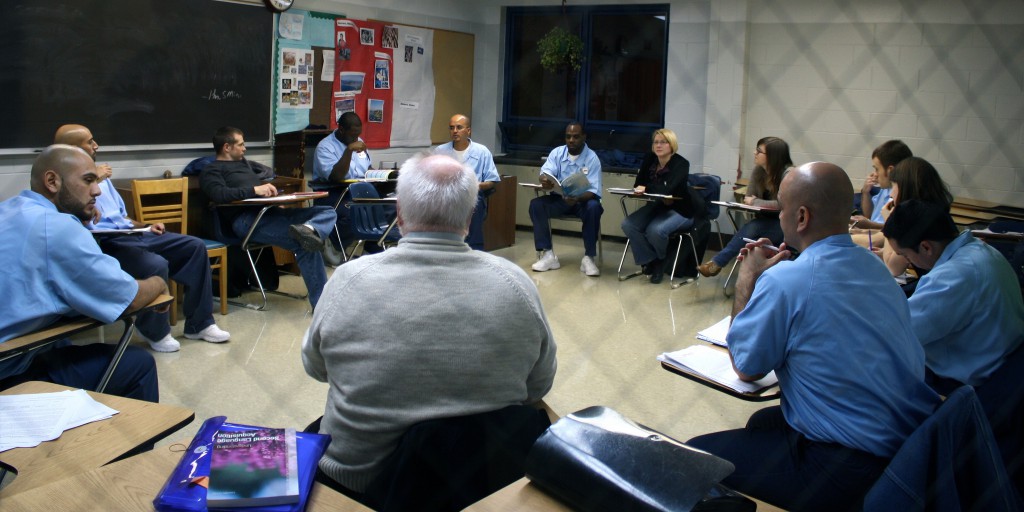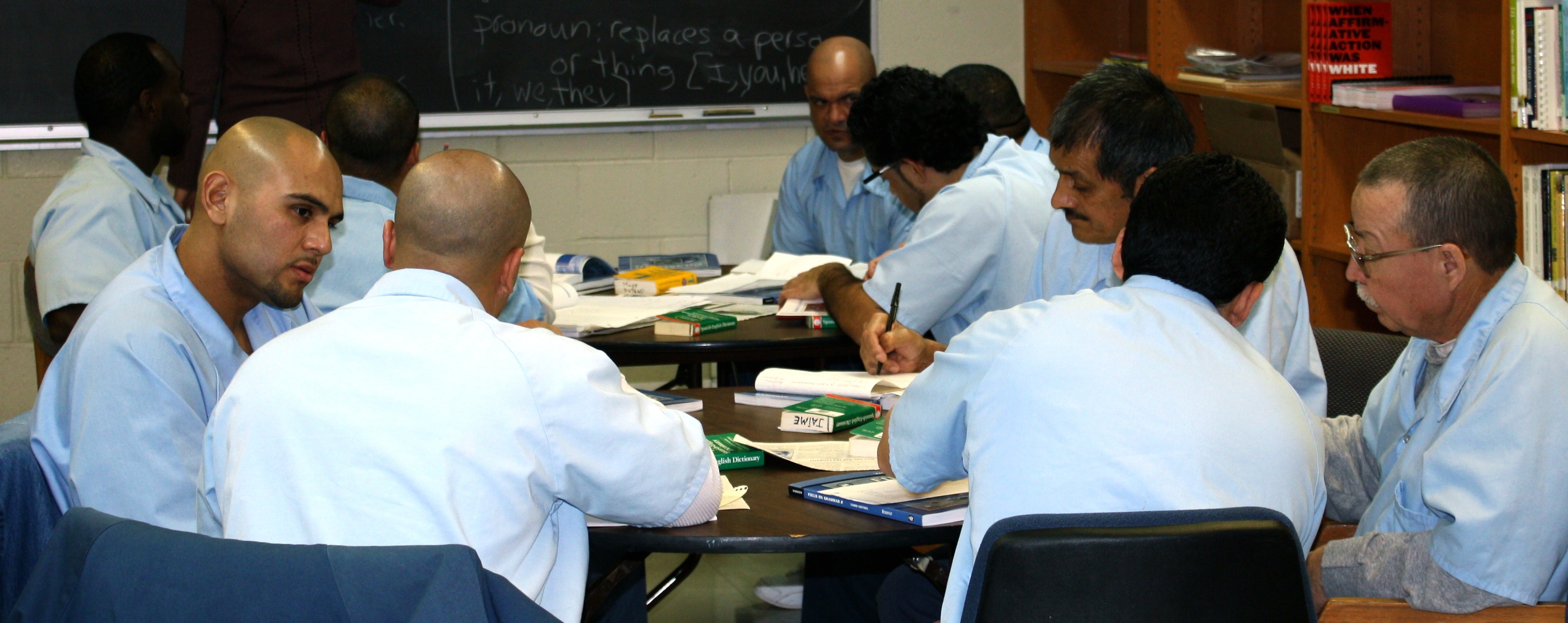By Dean DeChiaro and Phoebe Tollefson
Ten years after bilingual education programs were discontinued in Illinois prisons, the Department of Corrections has initiated a new pilot aimed at meeting the needs of non-English speaking inmates.
Meanwhile, red tape has put classes at the state’s only other bilingual prison education program on hold, worsening the daily challenges those inmates face.
Fifteen students are enrolled in Pontiac Correctional Center’s new English as a second language pilot class, which offers two-hour classes five days a week. The curriculum follows the Department of Corrections adult basic education program, offering classes in math, English, science, social studies and life skills.
Conversely, Language Partners, the University of Illinois’ program at Danville Correctional Center, operates outside of the prison’s adult basic education program. Trained peer instructors — all Danville inmates and mostly bilingual — take on the primary teaching responsibilities with a flexible curriculum. A Danville inmate conceived the program.
“There is a very special relationship between the [instructors and students],” said LuAnn Sorenson, a Language Partners co-coordinator. “The hierarchy is really low, so I think our learners really feel very, very comfortable asking the peer teachers questions about language and culture. There’s this constant ability to have more one-on-one help than you would ever find in a regular classroom.”
Both programs aim to help an underserved, unmeasured demographic within the Illinois prison population. But they face unique challenges. For instance, the state hasn’t decided how to evaluate students’ progress separately from their English-speaking counterparts. Language Partners’ classes, meanwhile, are temporarily halted while a new administrative hire navigates a difficult security clearance process, leaving students in the lurch.
“They’re discouraged; I think they’re sad,” said Rebecca Ginsburg, director of the Education Justice Project, which oversees Language Partners. “This is a really important part of their lives. It’s been tough.”

The Pontiac program faces other challenges as well. For instance, the Department of Corrections does not track the number of non-English-speaking inmates in custody. And the English as a second language courses at Pontiac are taught entirely in English, without the mix of Spanish offered in Language Partners classes.
“The teachers use phonetic strategies and other techniques to help non-English speaking students comprehend the material and learn the language,” said Nicole Wilson, a spokeswoman for the department.
The department has submitted a curriculum proposal for a new English as a second language program to the Illinois Community College Board, Wilson said.
Language barriers add another layer of difficulties for inmates, beyond the typical challenges of life behind bars. Those not fluent in English – primarily Spanish-speakers – must rely heavily on bilingual cellmates to communicate with staff and other inmates.
“Even if it’s something simple, like ordering from the commissary, they need help understanding what they can get,” Sorenson said. “To work through all the paperwork to get someone on the visitors list, they need help with that. They’re definitely dependent on somebody to translate for them if they meet with a doctor because that vocabulary is so specialized. And they lose privacy if they have to rely on somebody else.”
Ginsburg said a non-English speaking inmate’s inability to communicate with prison staff can lead to confusion, aggression and, in some instances, altercations.
“They have a lot of anecdotes, from horrifying anecdotes to funny anecdotes, about all the problems that can arise when you can’t tell what a correctional officer is saying when he’s yelling at you,” Ginsburg said.
Language Partners students and teachers have used what they learned in the class to find jobs after prison, Sorenson said, including some who are now teaching English in Chicago. Likewise, the mainly Mexican alumni who have been deported upon their release have found jobs teaching English or working in Mexico’s tourism industry, where language skills come at a premium.
Ginsburg said she is expecting Language Partners classes to resume in May, once a new hire, who will serve as a liaison between Danville’s administration and the university-led program, receives state security clearance. Department officials said they did not have immediate plans to expand or make permanent the Pontiac pilot.
Bilingual education classes were offered at nine Illinois prisons until 2005, when the Department of Corrections split its school district into adult and juvenile divisions.


